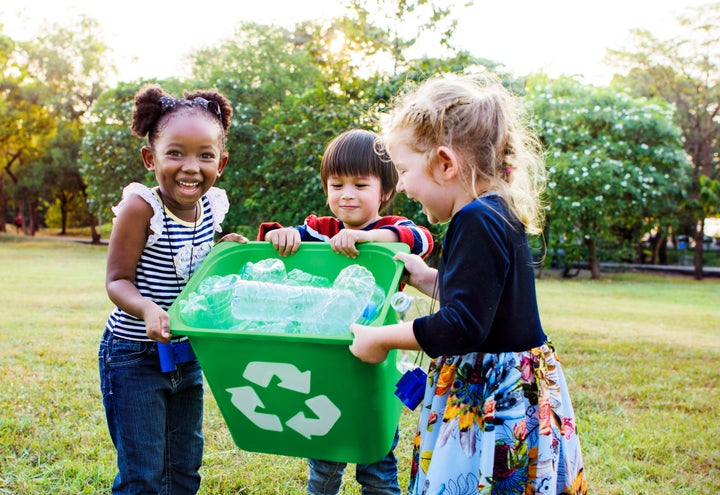
In today’s divisive and often frightening political climate, many parents hope to raise a younger generation that will lead the world with more care and compassion.
This includes not only care for others but also for the environment, which is facing serious threats as the Trump administration continues to roll back measures to protect it.
With that in mind, we asked parents and conservationists for their advice on raising kids who care about the planet.
Set A Good Example At Home
“We can teach youth to turn off the lights when they leave a room or keeping windows and doors to the outside closed to conserve energy,” president and CEO of the National Wildlife Federation, Collin O’Mara, told HuffPost in an email.
“Instead of throwing trash directly in a trash can that will go straight to the landfill, stop and see if it can be reused, recycled, or even composted! To save water, turn off the faucet while brushing your teeth,” he added.
O’Mara, who has a 6-year-old and a 10-month-old, explained that these simple daily activities make environmental conservation real and instinctive to kids.
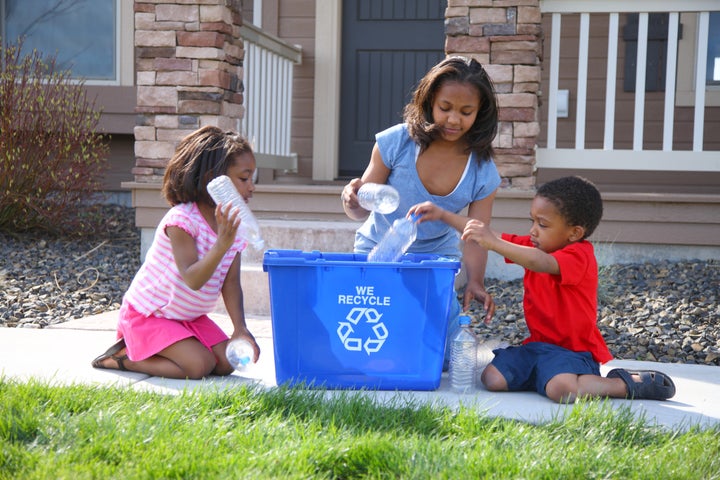
“It’s all about setting a good example in the home and the way we live our own lives as parents ― whether that’s recycling, minimizing waste, or paying attention to the amount of electricity and water we consume,” said Bill Ulfelder, executive director of The Nature Conservancy in New York. “Our kids don’t always let us know that they’re watching and listening, but they sure are.”
Philippe Cousteau, grandson of Jacques Cousteau and co-founder and president of EarthEcho International, recommends taking shorter showers, reducing the amount of meat in your family’s diet and calculating how much water you’re using in your home.
Get Your Kids Outside
“It helps to encourage kids to develop a true feeling for and connection with nature,” said O’Mara. He suggests families stop at parks on the way home from school, eat dinner outside, plant gardens at home, go fishing or take weekend walks together.
“It really helps to get kids outdoors early in their lives and as often as possible,” he wrote. “Experiences children have while gardening and creating habitats, conducting bird and plant counts, walking on adventurous trails, visiting parks and wetlands and more create lasting connections and put kids on a path towards protecting the world around them.”
Ulfelder echoed this sentiment, touting the health benefits of being outdoors ― from stress management to emotional well-being.
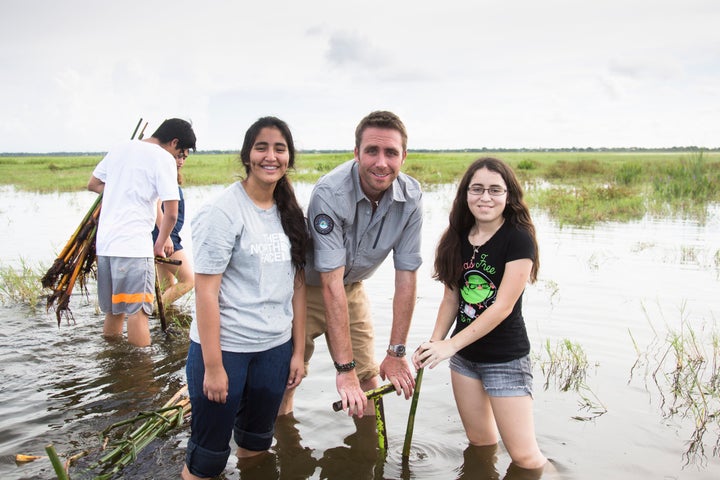
“It’s important to go outdoors in all seasons, too,” said Ulfelder, who has a 14-year-old daughter. While he doesn’t necessarily recommend going outside in the middle of a blizzard or sideways sleet, he believes people should spend time outdoors year-round, including in winter.
“That’s part of how you develop an appreciation for nature ― seeing trees, animals, wildlife, the landscapes around you, whether it’s urban or rural, in those different seasons,” he said, adding that there are, of course, precautions to take, like sunscreen, hats, tick checks, etc.
Talk About Environmental Issues
“Talk about the issues at hand and what’s going on in the world,” said Ulfelder, pointing to news events like hurricanes Harvey, Irma and Maria or wildfires in California.
Local issues are also major talking points. Ulfelder noted that people are often talking about problems with the New York City subway system, which is very relevant because public transit can help reduce your carbon footprint.
“I think talking to kids about what these issues are, answering their questions and listening to their ideas is good and makes conservation relevant,” said Ulfelder.
“Part of this is also imbuing them with an appreciation for science, and explaining what the science is telling us about different issues ― from changing weather patterns to wildfires and mudslides,” he added. “We as parents should build that love and appreciation of science in our kids because science is so important to living healthy, productive lives, being sustainable and caring about the environment.”
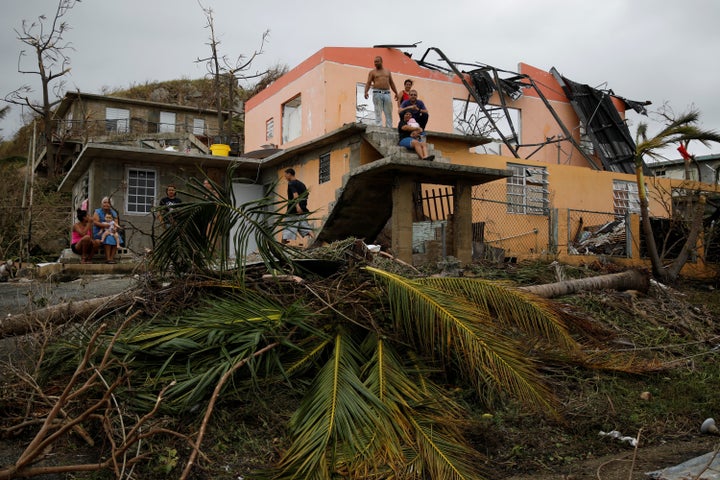
Cousteau recommends focusing on local communities as well.
“Another way to help young people understand the importance of healthy natural resources is to work with them to get to know the source of your community water and what they can do to help protect it,” he said, adding that there are resources to help get families involved in protecting local waterways like rivers, streams and creeks.
Look For Resources And Activities
O’Mara explained that the National Wildlife Federation works to bring nature and nature education and activities to places where many children spend their time, like schools, early childhood centers, local parks and recreation agencies, and after-school programs.
The National Wildlife Federation is one organization working to create natural spaces and gardens on school grounds, encouraging child care workers to offer more outdoor time and challenging schools to become greener.
Beyond national organizations like the National Wildlife Federation or the Nature Conservancy, there are local conservation efforts taking place across the country, from fundraisers to marches to educational events.
“From helping stranded horseshoe crabs on the Delaware Bay to going fishing for rockfish in the Chesapeake, I make sure to find ways to get on or near the water as much as possible,” said O’Mara. “Like most kids, my kids love animals so I look for any opportunity to make a connection to the animals in our own backyard habitat and we use our Ranger Rick binoculars to look at birds in our Backyard Wildlife Habitat. We also love camping as a family and participate every year in the Great American Campout.”
Travel
“It doesn’t have to be super fancy-pants travel. Some of my wife’s greatest memories of her childhood are loading the entire family into the station wagon, driving to national parks and camping along the way,” said Ulfelder. “It’s about getting the family together, going outdoors and learning about different ecosystems and wildlife.”
If you do travel, whether in the U.S. or abroad, you can calculate your carbon footprint from the trip and offset it to make it carbon-neutral, he added.
When Ulfelder travels with his daughter, they talk about how they see climate change manifest in different places and the interesting solutions different communities implement in response to challenges. While visiting Copenhagen two years ago, they were struck by how many people get around on bikes and the number of places for people to park and lock their bicycles.
“It was this eye-opening experience for all of us,” he said. “As proud as we are about the subway system, there are even lower impact ways that masses of Danish people are taking to get to work.”
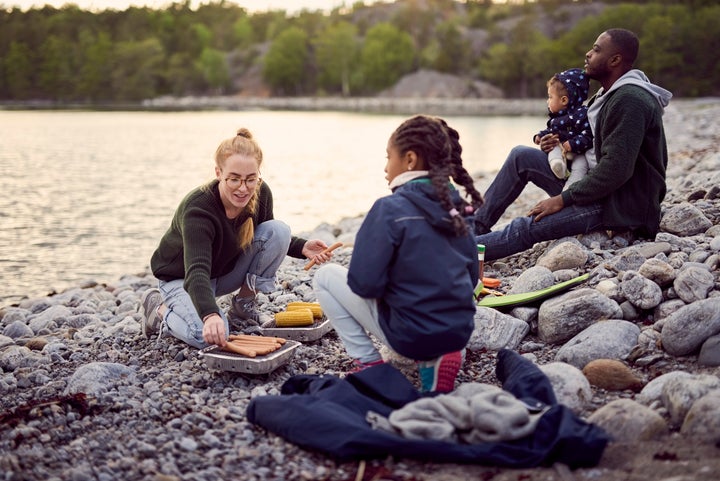
Ulfelder said that when he traveled outside the U.S. for the first time at the age of 16, he experienced new tropical environments and observed the challenges people face elsewhere. “That left an indelible mark on me and inspired me to become a conservationist,” he explained.
“Looking back to childhood, I wouldn’t underestimate the power of moments,” he continued. “I meet a lot of people who care about people and nature in my work, and a lot of them will talk about a moment ― on a hike or camping trip or even in the city somewhere when they were relatively young, maybe even at a zoo ― when just something [was] triggered in them that was really unforgettable and helped spark an interest, curiosity and passion.”
Listen To Your Kids
Kids sometimes learn about conservation in school or from their friends and bring home new ideas about steps to take.
“We should listen to those ideas, even if they seem a little harebrained,” said Ulfelder. “If they’re bringing these ideas of ways they want to reduce waste or minimize energy consumption or water consumption, I think it’s great to try to implement some of these ideas. Over the years, we’ve done composting in our yard, for instance.”
Cousteau said it’s important to include kids in the decision-making process around conservation. “All too often, adults tend to impose our will about what we think kids should do. That top-down approach doesn’t work,” he said. “Instead, try making it a conversation and decide what to do and how to do it together.”
He also recommends finding ways to engage with the community that match children’s interests ― like through art, food or animals.
Ultimately, it’s about listening and supporting kids in the present.
“Don’t discount the thoughts and ideas of young people just because they are young. Change is happening all over the world RIGHT NOW because of young people,” said Cousteau. “It’s not that they are going to change the world, it’s that they are changing the world. It’s not that we are preparing the next generation of change-makers ― they are change-makers NOW.